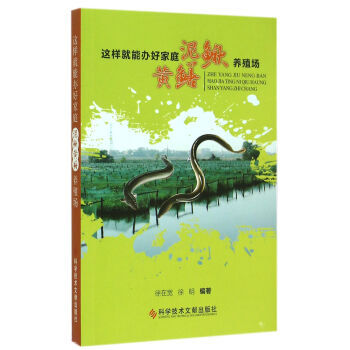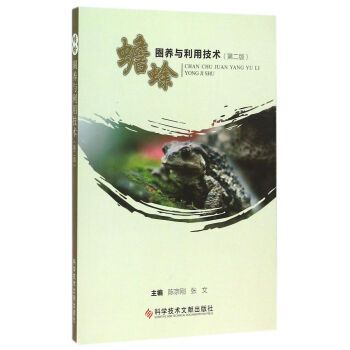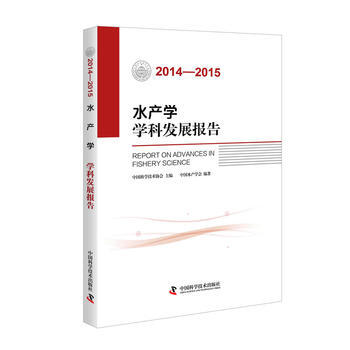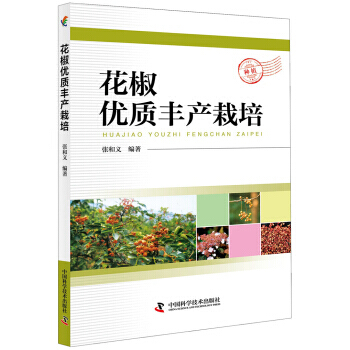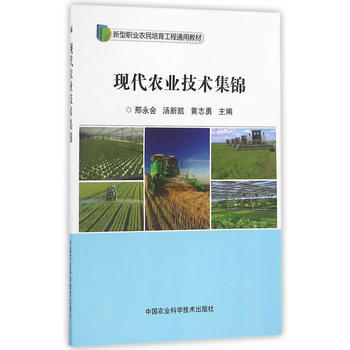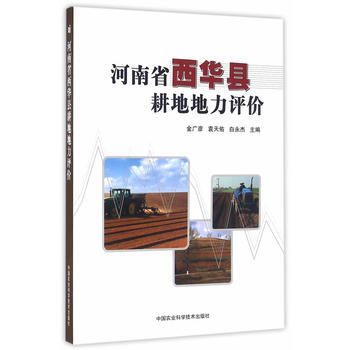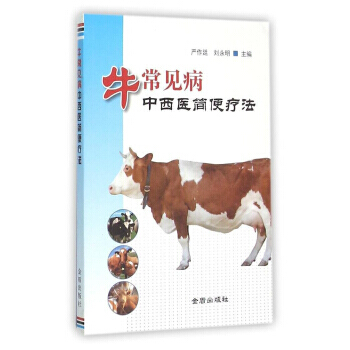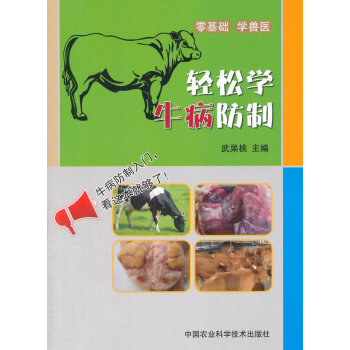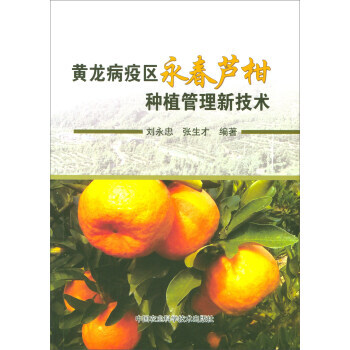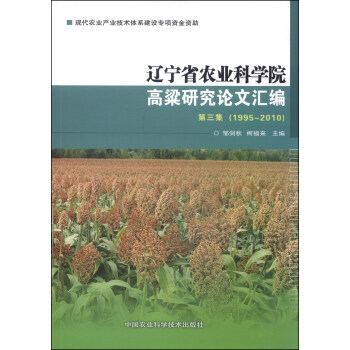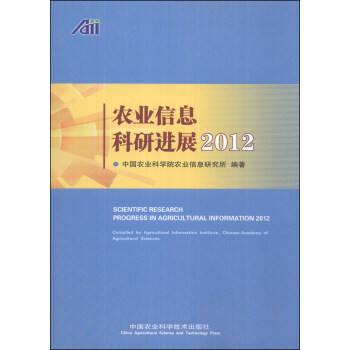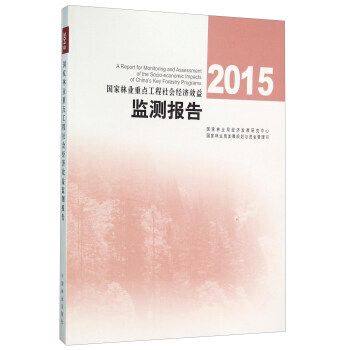

具体描述
基本信息
书名:2015国家林业重点工程社会经济效益监测报告
定价:110.00元
作者:国家林业局经济发展研究中心,国家林业局发
出版社:中国林业出版社
出版日期:2015-12-01
ISBN:9787503883316
字数:
页码:195
版次:1
装帧:平装
开本:16开
商品重量:0.4kg
编辑推荐
内容提要
《2015国家林业重点工程社会经济效益监测报告》紧紧围绕2014年国家林业重点生态工程实施产生的社会、经济和生态效益这一主题,针对不同工程情况设计了反映工程特征及其影响的指标体系。
目录
序
1 总报告
摘要
2 天然林资源保护工程
天然林资源保护工程重点国有森工企业社会经济效益监测报告
天然林资源保护工程县社会经济效益监测报告
3 退耕还林工程
新一轮退耕还林还草政策专题研究报告
4 京津风沙源治理工程
京津风沙源治理工程社会经济效益监测报告
5 野生动植物保护及自然保护区建设工程
野生动植物保护及自然保护区建设工程社会经济效益监测报告
6 调查员报告
湖北省竹溪县新一轮退耕还林工程实施情况报告
湖南省溆浦县新一轮退耕还林工程实施情况报告
湖南省永顺县新一轮退耕还林工程实施情况报告
湖南省桑植县新一轮退耕还林工程实施情况报告
广西壮族自治区隆林各族自治县新一轮退耕还林工程实施情况报告
云南省会泽县新一轮退耕还林工程实施情况报告
贵州省清镇市新一轮退耕还林工程实施情况报告
贵州省思南县新一轮退耕还林工程实施情况报告
甘肃省清水县新一轮退耕还林工程实施情况报告
甘肃省环县新一轮退耕还林工程实施情况报告
甘肃省泾川县新一轮退耕还林工程实施情况报告
甘肃省康县新一轮退耕还林工程实施情况报告
黑龙江省尚志市新一轮退耕还林工程实施情况报告
贵州麻阳河自然保护区工程实施情况报告
7 附录
附表
后记
作者介绍
文摘
序言
用户评价
《2015国家林业重点工程社会经济效益监测报告》——这个书名,宛如一扇扇严谨的学术之门,邀请我去探索中国林业发展的脉络及其所产生的深远影响。2015年,一个清晰的时间标记,表明这份报告是对那个特定年度国家林业战略实施成果的全面梳理。国家林业重点工程,这些字眼本身就蕴含着国家意志、战略部署和对未来生态文明建设的期许。“社会经济效益监测报告”,则是将这些宏大战略的具体化、可衡量化,它要求我们不仅要看到投入,更要关注产出,关注这些工程如何为经济增长添砖加瓦,如何为社会福祉贡献力量。国家林业局经济发展研究中心与国家林业局的联合发布,则为这份报告披上了权威与专业的光环。 我首要关注的是,“社会经济效益”究竟是如何被界定和量化的。在2015年,中国经济正处于转型升级的关键期,林业工程的重要性日益凸显。我希望这份报告能够深入解析,各项重点林业工程,例如森林质量提升、生态廊道建设、湿地保护修复等,在经济层面带来了哪些直接或间接的效益?是否有效带动了地方经济发展,增加了农民收入,创造了就业机会?更重要的是,在社会效益方面,报告是否能够清晰地展现出这些工程对改善生态环境、保护生物多样性、涵养水源、净化空气等方面的贡献,以及这些生态改善最终如何转化为民众生活品质的提升、健康水平的提高,进而推动社会和谐稳定与可持续发展? “监测”二字,则为这份报告注入了动态的、过程性的维度。我推测,2015年的报告,很可能是某个更大监测体系的阶段性成果。报告是否会详细介绍监测的设计理念、具体方法、数据采集标准,以及在实施过程中遇到的挑战与解决方案?这种对过程的重视,不仅增强了报告的可信度,也为未来的同类研究提供了宝贵的经验。它体现了一种严谨求实、持续改进的工作作风。 Moreover, as a reader with an interest in policy evaluation, I would be particularly keen to understand the methodological rigor behind the report's findings. The ability to quantify intangible benefits like ecological services or improved public health requires sophisticated analytical tools and a robust data collection framework. I anticipate that the report will detail these methodologies, offering insights into how complex socio-economic impacts are measured and assessed. Furthermore, the year 2015 is a significant marker in China's environmental policy landscape, characterized by a growing emphasis on green development and ecological conservation. This report, therefore, likely serves as a critical piece of evidence showcasing how national forestry projects have actively contributed to these national objectives. I expect it to illustrate the synergy between economic progress and environmental stewardship, demonstrating the effectiveness of China's sustainable development strategies. The collaborative authorship by the Economic Development Research Center and the State Forestry Administration signals a high level of academic rigor and official backing. This partnership implies that the report is not merely a summary of activities but a well-researched analysis grounded in evidence. As a reader, I anticipate a document that is both comprehensive and credible, providing a reliable assessment of the socio-economic dividends of national forestry programs. I also believe that such reports play an essential role in fostering public understanding and engagement. By making the outcomes of forestry projects transparent, it can educate the public about the importance of forests and encourage greater participation in conservation efforts. This transparency is vital for building trust and for demonstrating the value of public investment in environmental protection. Finally, the title's emphasis on "socio-economic benefits" underscores a results-oriented approach. It suggests that the report is designed to evaluate the tangible returns on government investment, both in economic terms and in terms of societal well-being. This focus on impact and accountability is a hallmark of effective governance and a testament to the importance placed on forestry in China's national development agenda.
评分《2015国家林业重点工程社会经济效益监测报告》——这个书名,仿佛是一个精心雕琢的探索引导,将我带入了一个关于国家林业战略实施与成效评估的深邃领域。2015年,一个时间上的锚点,意味着这份报告是对那个特定年度国家林业重点工程的一次全面“体检”。“重点工程”本身就暗示着这些项目的重要性、规模以及对国家发展战略的支撑作用。而“社会经济效益监测报告”,则进一步聚焦于这些投入的最终落脚点——它们如何转化为实实在在的社会福祉和经济增长。国家林业局经济发展研究中心与国家林业局的署名,则为这份报告增添了官方的权威性和学术的严谨性,让我对其内容的信赖度倍增。 我首先会关注的是,报告将如何解读“社会经济效益”这个宏大的概念。在2015年,中国正处于经济结构调整、发展模式转变的关键时期。国家林业局的重点工程,例如退耕还林、森林生态补偿、湿地保护修复、防沙治沙等,它们所产生的效益,绝非仅限于直接的经济回报。我迫切想知道,报告是否能够清晰地阐释这些工程如何促进了区域经济的协调发展,如何通过发展林下经济、生态旅游等产业,为当地居民开辟了新的增收渠道,创造了多少就业机会?同时,报告是否也深入探讨了这些工程对改善生态环境、提升生态服务功能所带来的社会效益,例如水源涵养、空气净化、生物多样性保护,以及这些生态改善如何间接惠及了民生福祉,如降低疾病发病率、提升生活品质等? “监测”二字,则暗示着这份报告并非一次性的总结,而是一种系统性的、持续性的评估过程。我想象着,报告中可能会包含关于监测方法论的阐述,例如如何选取样本、如何收集数据、如何进行量化分析,以及在不同区域、不同类型的林业工程中如何保持评价标准的一致性。这种对过程的关注,能够极大地提升报告的可信度,也为其他类似的研究提供了宝贵的经验。它表明,国家林业部门在评估自身工作成效时,秉持着科学、严谨的态度,力求客观公正。 Moreover, as a reader, I would be highly interested in the specific details and case studies presented within the report. For instance, if a particular afforestation project led to a significant increase in local income and improved ecological conditions, I would want to know the specifics of how this was achieved. Such detailed examples would not only make the report more engaging but also offer practical lessons for future forestry development initiatives. Furthermore, the year 2015 is a crucial point in China's pursuit of sustainable development. This report likely offers valuable insights into how national forestry projects have aligned with and contributed to this broader agenda. I would expect to see an analysis of how these projects have fostered a balance between economic growth and environmental conservation, demonstrating the effectiveness of China's ecological civilization strategy. The collaboration between the Economic Development Research Center and the State Forestry Administration suggests a high level of research rigor and official endorsement. This partnership implies that the report is based on solid data and comprehensive analysis, making it a reliable source of information on the socio-economic impact of national forestry projects. I anticipate a document that is both informative and authoritative. I also believe that such a report serves an important communication function. By making the socio-economic benefits of forestry projects transparent, it can foster greater public awareness and support for conservation efforts. This transparency is essential for building trust and for encouraging collective action towards a greener future. Finally, the title itself implies a focus on the tangible outcomes of government investment. It suggests that the report is not merely a bureaucratic document but a serious attempt to assess the return on investment, both economically and socially, from national forestry endeavors. This focus on impact and accountability is a hallmark of good governance and effective policy implementation.
评分凝视着《2015国家林业重点工程社会经济效益监测报告》这个书名,我的思绪便如同林间的微风,开始在报告可能涵盖的广阔天地里徜徉。2015年,一个具有标志性意义的年份,正值中国经济发展模式转型、生态文明建设深入推进的关键时期。国家林业局作为国家生态建设的重要部门,其“重点工程”的实施,必然承载着沉甸甸的战略使命。而“社会经济效益监测报告”这几个字,则像是为这些战略工程注入了务实的生命力,要求它们必须在经济增长和社会福祉的维度上,交出一份令人信服的答卷。国家林业局经济发展研究中心与国家林业局的联合发布,更是为这份报告奠定了坚实的学术背景和官方权威。 我首先好奇的是,报告将如何界定和量化“社会经济效益”?这绝非仅仅是简单的经济指标堆砌,而应该是一个包含多层次、多维度的评价体系。想象一下,那些在2015年展开的国家级林业工程,它们可能涉及退耕还林、森林可持续经营、国家公园建设、湿地保护、生态廊道构建等等。报告是否会细致地分析这些工程如何直接或间接增加了林业产值,促进了农民收入的增长,创造了多少就业岗位?更进一步,它是否触及到了生态环境改善带来的长远效益,比如水源涵养能力的提升,土壤侵蚀的减缓,生物多样性的恢复,以及这些变化对当地居民生活质量、健康状况产生的积极影响?我期待看到一份能够全面展现林业投资“综合价值”的报告。 “监测”二字,则赋予了这份报告一种动态的、持续的视角。我猜想,2015年的报告,可能只是一个阶段性的成果展示,背后必定有一套科学的监测体系在运作。报告是否会介绍这套监测体系的构建过程,所采用的数据采集方法,以及在不同地区、不同类型的工程中如何保证数据的准确性和可比性?这种对过程的关注,比仅仅呈现结果更能体现出研究的严谨性和前瞻性。它暗示着,林业部门并非“一次性”地投入和评估,而是抱着一种持续改进、优化策略的态度来推进工作。 Moreover, the very nature of a "monitoring report" implies a commitment to data-driven decision-making and public accountability. As a reader, I would be keen to understand the methodology employed for data collection and analysis. Were there specific indicators developed for each type of project? How were potential biases addressed? The transparency in outlining these methodological aspects would greatly enhance the credibility of the report's findings and provide a valuable framework for future similar assessments. Furthermore, the year 2015 is significant. It was a period when China was vigorously pushing for ecological civilization and sustainable development. This report, therefore, likely showcases how national forestry projects were instrumental in achieving these broader national objectives. I anticipate that it will illustrate the synergy between economic growth and environmental protection, demonstrating how forestry initiatives contribute to a greener economy and a more sustainable future for the nation. I also envision that the report would include in-depth case studies illustrating the practical impact of these projects on local communities. For instance, how did a particular afforestation project transform a degraded landscape, improve local livelihoods, and foster a sense of community ownership and pride? These narratives, supported by concrete data, would make the report more engaging and highlight the human dimension of these large-scale endeavors. The collaborative authorship by the Economic Development Research Center and the State Forestry Administration suggests a rigorous and multi-faceted approach to research. This partnership likely ensures that the report benefits from both theoretical expertise and practical on-the-ground knowledge. As a reader, I anticipate a document that is not only comprehensive in its scope but also grounded in reality, reflecting the complexities and nuances of implementing national forestry projects. Finally, I believe such a report serves as a crucial communication tool, not just for policymakers and researchers, but also for the general public. By disseminating information on the socio-economic benefits of forestry projects, it can foster a greater understanding and appreciation for the role of forests in national development and environmental sustainability. This educational aspect is vital for garnering public support and participation in future conservation efforts.
评分看到“2015国家林业重点工程社会经济效益监测报告”这个标题,我的脑海里立刻浮现出一种严肃而又充满期待的画面。2015年,那是一个中国经济正经历深刻转型,绿色发展理念日益深入人心的时期。国家林业局作为重要的生态建设和经济发展部门,其重点工程的社会经济效益监测,无疑是衡量这些投入是否“划算”,以及是否真正服务于国家发展战略的关键所在。报告的署名,国家林业局经济发展研究中心和国家林业局,更是为这份报告赋予了官方的权威性和研究的深度,让我相信其背后必然有扎实的数据支撑和严谨的分析逻辑。 我迫切想知道的是,这份报告将如何描绘出2015年国家林业重点工程的“社会经济效益”。这个概念本身就相当宏大,涵盖的范围极广。它是否仅仅停留在经济效益的层面,比如林业产值的增长、农民收入的增加、就业机会的创造?还是更进一步,深入到社会效益的范畴,比如生态环境的改善对居民健康的影响、对旅游资源的开发带动当地文化传播、对区域协调发展的促进作用,甚至是其对提升国家生态安全屏障能力的长远价值?我非常期待看到报告能够提供一个全面、多维度的评价体系,让我们能够清晰地看到,这些林业投资究竟“值”在哪里。 这份报告的“监测”属性,也让我格外感兴趣。它意味着这并非一次性的总结,而是一种持续性的观察和评估。2015年的数据,是否只是一个时间节点的快照?报告中是否会提及监测方法的建立、数据的收集过程,以及未来可能进行的跟踪分析?我希望它能展现出一种科学、系统的工作流程,让我们看到,国家林业部门是如何通过科学的监测手段,来评估和调整其发展战略的。这种动态的视角,比静态的成果展示更有价值,因为它预示着一种不断学习、不断优化的过程。 从一个普通读者的角度出发,我希望这份报告能够不仅仅是给专家和决策者看的,也能让像我这样的普通人读懂。它应该能够用通俗易懂的语言,辅以直观的图表和数据,来呈现复杂的分析结果。我想象着,报告中是否会包含一些具体的案例分析,比如某个具体的林业项目,是如何在2015年取得了显著的社会经济效益,它给当地带来了哪些具体的改变?这些鲜活的案例,能够让枯燥的数据变得生动起来,也更能引起读者的共鸣。 同时,2015年这个年份,也让这份报告具有了特殊的时代意义。在那前后,中国正大力倡导“绿水青山就是金山银山”的理念,推动经济发展方式的绿色转型。这份报告,是否能清晰地展现出,国家林业重点工程是如何契合这一时代主题,在促进经济发展的同时,有效地保护了生态环境?它是否能为我们理解中国在绿色发展道路上的探索和实践,提供一个重要的视角?我期待它能展现出林业工程在推动可持续发展中的积极作用,以及其在应对气候变化、保护生物多样性等全球性挑战中的贡献。 我甚至可以想象,这份报告的编写过程本身,就充满了挑战。如何在一个如此庞大的国家范围内,对众多的重点工程进行系统性的监测?如何克服地域差异、项目类型多样等困难,统一评价标准?国家林业局经济发展研究中心和国家林业局发,能够汇聚各方力量,克服重重困难,最终完成这样一份报告,本身就体现了国家在推进林业现代化建设方面的决心和能力。我期待在报告中,能感受到这种专业精神和严谨态度。 我特别好奇,在“社会经济效益”的评估中,是否会涉及到一些隐性的、长期的效益。比如,森林资源的涵养水源、净化空气、调节气候的能力,这些看似“无形”的效益,如何被纳入到监测报告中?又比如,生态旅游业的发展,除了直接经济效益,是否还包括了对当地居民健康水平的提升、对文化传承的促进作用?我希望报告能够提供一些更具深度和前瞻性的思考,而不仅仅是眼前可见的经济指标。 从一个读者的角度,我希望这份报告能成为一本“干货”。它应该包含扎实的数据、严谨的分析、清晰的结论,并且能够为未来的林业发展提供有价值的参考。它不仅仅是一份关于过去的记录,更应该是一份指向未来的指南。我期待它能够回答一些核心的问题:国家林业重点工程的投入,究竟带来了怎样的回报?这些回报,是否符合预期的目标?在未来的发展中,我们应该如何优化和改进? Furthermore, the title itself, with its explicit mention of "social and economic benefits monitoring report," suggests a comprehensive and systematic approach to evaluating the impact of these key national forestry projects. It implies that the report goes beyond mere quantitative data and delves into the qualitative aspects of how these initiatives have affected society and the economy. I'm particularly interested in how the report quantifies intangible benefits, such as improvements in public health due to better environmental quality or the long-term ecological services provided by well-managed forests. Moreover, the year 2015 places this report within a specific context of China's economic and environmental policies. It was a period when the nation was increasingly focusing on sustainable development and ecological civilization. Therefore, this report likely offers insights into how forestry projects contributed to these broader national goals. I anticipate that the findings will shed light on the effectiveness of government investment in forestry and its role in fostering a greener economy, which is a critical aspect of China's development trajectory. Finally, the collaborative authorship by the Economic Development Research Center and the State Forestry Administration signifies a high level of official endorsement and rigorous research. This partnership suggests that the report is not only a compilation of data but also a result of thorough analysis and strategic planning. As a reader, I anticipate a document that is both informative and authoritative, providing a credible assessment of the socio-economic impact of national forestry initiatives.
评分《2015国家林业重点工程社会经济效益监测报告》——仅仅是这个书名,就自带一股官方的庄重感和探索的期待感。2015年,一个具体的年份,意味着这份报告是对那个年度国家在林业领域投入的“成绩单”。“国家林业重点工程”这几个字,透露出的是国家层面的战略部署,是关乎国家生态安全、经济发展的重要举措。“社会经济效益监测报告”,则点明了其核心使命:如何科学、客观地评估这些工程所带来的实际价值,包括经济增长和社会福祉的提升。国家林业局经济发展研究中心与国家林业局的联合署名,更是为这份报告增添了不可撼动的权威性和深厚的学术底蕴。 我的阅读兴趣,首先会集中在“社会经济效益”的定义与量化上。一个国家级的林业重点工程,其效益绝不可能仅仅是砍伐多少木材、种植多少树苗这么简单。我期待报告能清晰地勾勒出2015年各项工程在经济层面的贡献,比如是否促进了林农增收,是否拉动了区域经济增长,是否创造了新的就业机会?更重要的是,它在社会效益层面有哪些体现?例如,对改善区域生态环境、提升生物多样性、涵养水源、净化空气等方面的贡献,这些“生态红利”又是如何转化为民众生活品质的提升、健康状况的改善,乃至对社会整体福祉的积极影响?我希望看到一份能够全面展现林业投资“多重价值”的报告。 “监测”一词,暗示了这份报告并非一次性的总结,而是体系化、持续性评估的一部分。我想象着,报告的编写背后,必定有一套严谨的监测框架和数据收集机制。它会介绍监测的具体方法、指标体系,以及如何处理不同地区、不同项目间的差异性,从而保证评价的科学性和可比性。这种对过程的关注,能极大地提升报告的可信度,也为未来的林业发展和政策制定提供了重要的参考依据。它显示出一种精益求精、持续改进的工作态度。 Moreover, as a curious reader, I would be particularly drawn to any qualitative assessments or case studies that illustrate the real-world impact of these forestry projects. Beyond statistical data, I would be interested in hearing about specific instances where these initiatives have demonstrably improved the lives of local communities or significantly enhanced the ecological health of a region. Such narratives can provide a more tangible understanding of the benefits derived from national forestry investments. Furthermore, the year 2015 is significant as it falls within a period of intensified focus on sustainable development and ecological civilization in China. This report likely serves as a crucial piece of evidence demonstrating how national forestry projects have contributed to these overarching national goals. I anticipate that it will shed light on the effectiveness of China's strategies for balancing economic growth with environmental protection. The collaborative authorship between the Economic Development Research Center and the State Forestry Administration suggests a high level of research rigor and official endorsement. This partnership implies that the report is based on robust data and comprehensive analysis, making it a credible source of information regarding the socio-economic dividends of national forestry programs. I expect a document that is both informative and authoritative. I also believe that such reports play an essential role in fostering public awareness and support for conservation efforts. By making the outcomes of forestry projects transparent, it can educate the public about the importance of forests and encourage greater participation in sustainable practices. This transparency is vital for building trust and for demonstrating the value of public investment in environmental protection. Finally, the title's emphasis on "socio-economic benefits" underscores a results-oriented approach. It suggests that the report is designed to evaluate the tangible returns on government investment, both in economic terms and in terms of societal well-being. This focus on impact and accountability is a hallmark of effective governance and a testament to the importance placed on forestry in China's national development agenda.
评分这本书名,初初望去,就透着一股官方的严谨和一丝丝的学术气息。2015年,一个不算太遥远但又足以沉淀出一定数据价值的年份,国家林业的重点工程,这本身就承载着国家意志和对未来发展的期许。社会经济效益监测报告,这几个词组合起来,便勾勒出一幅宏大的图景:那些林业领域的重大项目,是如何在经济浪潮中落地生根,又如何切实地改善民生,拉动区域经济,乃至于对整个社会结构产生影响的。国家林业局经济发展研究中心和国家林业局发的署名,则进一步佐证了这份报告的权威性和深度。 读这本书,我首先想到的,是它背后所凝聚的无数人的心血和努力。想象一下,在2015年那个春天,全国各地的林业项目,从南到北,从东到西,都在如火如荼地进行着。而这份报告,就像是一面放大镜,将这些分散的、个体化的进展,一一捕捉、记录,并进行系统性的分析。它不仅仅是冰冷的数字堆砌,更应该蕴含着那些在基层摸爬滚打的林业工作者的故事,那些为项目落地而奔走呼号的基层干部的心声,以及那些因林业发展而生活得到改善的农民和居民的喜悦。 我特别好奇的是,报告会如何量化“社会经济效益”。这个概念本身就包含着许多难以精确计算的维度。是就业机会的增加?是农民收入的提高?是生态环境的改善带来的间接效益?还是当地基础设施的完善?抑或是文化旅游产业的兴起?我期待着报告能够提供一套相对科学、严谨的评价体系,让我们能够清晰地看到,投入到国家林业重点工程中的每一分钱、每一份力,最终都转化成了哪些实实在在的好处。 从一个读者的角度来说,这份报告最吸引我的地方在于它的“报告”属性。这意味着它不仅仅是学术理论的探讨,更是一种面向决策者和公众的沟通。我想象着,这份报告会被提交给哪些层面?它会对未来的林业政策制定产生怎样的影响?它能否为其他地区或国家的类似工程提供借鉴和参考?这种“实用性”和“指导性”,是这类官方报告的独特价值所在,也是我希望从中汲取的精华。 而且,2015年这个时间节点,也颇具意义。在那前后,中国正处于经济发展模式的转型期,更加注重可持续发展和绿色经济。林业工程,作为重要的生态建设和经济发展相结合的领域,在这场转型中扮演着怎样的角色?这份报告,是否能捕捉到这种时代的脉搏,展现出林业工程在推动绿色发展、实现经济增长与环境保护双赢方面的作用?我希望它能提供一些前瞻性的思考,而不仅仅是对过去一年成绩的总结。 我脑海里勾勒出的画面是,这份报告的每一页,都可能是一个小小的案例研究。比如,某个地方的退耕还林政策,是如何通过调整产业结构,带动当地特色农产品发展,从而实现农民增收和生态改善的双重目标。又或者,某个国家级森林公园的建设,是如何吸引了大量游客,刺激了餐饮、住宿、旅游纪念品等相关产业的发展,并为当地居民提供了就业岗位。这些生动鲜活的案例,一定会让报告的内容更加丰满,也更容易被理解。 此外,这份报告的“监测”二字,也暗示着它并非一次性的成果展示,而可能是一种持续性的观察和评估。我想象着,2015年的报告,可能只是一个阶段性的节点,它背后应该有一个更长远的监测计划,能够追踪这些林业工程的长期效益,包括它们对气候变化、生物多样性保护等宏观层面的贡献。这种长期视角,对于评估一个工程的真正价值至关重要。 作为一名对国家战略发展抱有浓厚兴趣的普通读者,我希望这份报告能够用一种既专业又不失通俗易懂的方式,来呈现复杂的数据和分析。它不应该充斥着只有专业人士才能理解的术语,而是应该让普通公众也能窥探到国家在林业发展上的宏大蓝图,以及这些蓝图如何转化为触手可及的社会经济效益。这种“信息公开”和“公众沟通”的精神,也是一份优秀的官方报告应有的品质。 我想象着,这份报告的附录中,可能会包含大量的图表、数据表格,甚至是地图。这些直观的信息,能够帮助我更清晰地理解报告的内容。例如,不同区域的林业工程效益对比,不同类型工程的投入产出比分析,亦或是某项工程在不同时间段内的效益变化曲线。这些具体的数据,能够支撑起报告的结论,也让读者能够进行更深入的思考和分析。 总而言之,这份《2015国家林业重点工程社会经济效益监测报告》在我看来,不仅仅是一份文件,它更像是一部关于中国林业发展、关于绿色经济转型、关于国家战略落地的厚重史书。它承载着时代的印记,凝聚着无数人的智慧和汗水,也寄托着对未来可持续发展的美好期许。我期待着,通过阅读它,能够更深入地理解中国林业事业的成就与挑战,以及它在建设美丽中国进程中所扮演的关键角色。
评分《2015国家林业重点工程社会经济效益监测报告》——这个书名,仿佛一把开启中国林业发展奥秘的钥匙,让我对报告的内容充满了好奇与期待。2015年,一个具体的年份,意味着这份报告是对那个年度国家林业重点工程实施成果的一次全面“体检”。“国家林业重点工程”,这几个字眼承载着国家战略的重量,预示着工程的规模与重要性。“社会经济效益监测报告”,则聚焦于这些战略性工程的最终成效,要求它们在经济增长和社会福祉的双重维度上,交出一份令人信服的答卷。国家林业局经济发展研究中心与国家林业局的联合发布,则为这份报告增添了毋庸置疑的官方权威和学术严谨性。 我首先会关注的,是报告如何定义和衡量“社会经济效益”。这是一个极具深度的概念,尤其是在2015年中国经济结构调整、绿色发展理念深入人心的背景下。我希望这份报告能够清晰地阐释,各项重点林业工程,例如退耕还林、森林质量提升、国家公园建设、湿地保护等,在经济层面带来了哪些直接或间接的效益?是否有效地增加了林农收入,创造了新的就业机会,促进了地方经济的多元化发展?同时,报告是否也深入分析了这些工程在社会效益层面的贡献?比如,对改善生态环境、提升生物多样性、涵养水源、净化空气等方面的作用,这些“生态红利”最终如何转化为民众生活品质的提升、健康水平的改善,以及对社会整体福祉的积极影响?我期待看到一份能够全面展现林业投资“综合价值”的报告。 “监测”二字,赋予了这份报告一种动态的、持续的视角。我推测,2015年的报告,可能只是一个阶段性的成果展示,背后必然有一套科学的监测体系在运作。报告是否会介绍这套监测体系的设计理念、具体方法、数据收集标准,以及在执行过程中遇到的挑战与应对策略?这种对过程的关注,能够极大地提升报告的可信度,也为未来的林业发展和政策制定提供了重要的参考依据。它显示出一种科学管理、持续改进的工作思路。 Moreover, as a reader who values evidence-based analysis, I would be keenly interested in the quantitative data and statistical methodologies presented in the report. How are intangible benefits, such as improved air quality or enhanced biodiversity, translated into measurable socio-economic indicators? I would expect the report to provide a detailed account of the research methods employed, ensuring the credibility and reliability of its findings. Furthermore, the year 2015 holds particular significance as it falls within a period of accelerated efforts towards building an ecological civilization in China. This report likely serves as a crucial document illustrating how national forestry projects have actively contributed to these overarching national goals. I anticipate that it will showcase the synergy between economic progress and environmental stewardship, demonstrating the effectiveness of China's sustainable development strategies. The collaborative authorship by the Economic Development Research Center and the State Forestry Administration signifies a high level of research rigor and official endorsement. This partnership implies that the report is not merely a summary of activities but a well-researched analysis grounded in evidence. As a reader, I anticipate a document that is both comprehensive and credible, providing a reliable assessment of the socio-economic dividends of national forestry programs. I also believe that such reports play an essential role in fostering public understanding and engagement. By making the outcomes of forestry projects transparent, it can educate the public about the importance of forests and encourage greater participation in conservation efforts. This transparency is vital for building trust and for demonstrating the value of public investment in environmental protection. Finally, the title's emphasis on "socio-economic benefits" underscores a results-oriented approach. It suggests that the report is designed to evaluate the tangible returns on government investment, both in economic terms and in terms of societal well-being. This focus on impact and accountability is a hallmark of effective governance and a testament to the importance placed on forestry in China's national development agenda.
评分这本书的标题——《2015国家林业重点工程社会经济效益监测报告》,初看之下,便有一种信息量巨大、内容严谨的预感。2015年,一个具体的年份,意味着这份报告记录的是那个时期国家在林业领域投入的具体成果。国家林业重点工程,这几个字本身就承载着国家层面的战略考量和对未来生态、经济发展的期许。而“社会经济效益监测报告”,则直指其核心——如何量化、评估这些工程的实际成效,不仅仅是经济层面的增长,更包含了对社会福祉的提升。国家林业局经济发展研究中心和国家林业局发的联合署名,更是让这份报告的权威性不言而喻,暗示着其背后有扎实的研究团队和广泛的调研基础。 我脑海中浮现的,是无数个在2015年那一年,分布在祖国大江南北的林业项目。它们可能是在艰苦的山区,也可能是在相对发达的地区;它们可能是大规模的植树造林,也可能是对现有森林资源的精细化管理,或者是湿地保护、防沙治沙等多元化的工程。这份报告,就像是为这些分散的项目,织就了一张网,将它们的影响力一一捕捉,然后进行系统性的梳理和分析。我期待它能为我们描绘出一幅清晰的中国林业发展“地图”,让我们看到,在国家战略的指引下,林业工程是如何在经济发展和环境保护之间找到了平衡点,甚至实现了协同增效。 “社会经济效益”这个词,在经济学和政策研究领域,往往意味着对多重目标的考量。我非常想知道,这份报告在评估效益时,具体包含了哪些维度?是直接的经济产值增加,比如木材、林下经济产品的产出?还是间接的经济效益,比如生态旅游业的发展,带动了餐饮、住宿、交通等相关产业的繁荣?而“社会效益”方面,是否包含了对当地农民收入的提高,就业机会的创造?对改善农村人居环境、提升居民生活质量的作用?甚至是对生物多样性保护、水源涵养、空气净化等生态服务功能的价值评估?我期望报告能够呈现一个既全面又具有操作性的评价框架。 Moreover, the term "monitoring report" suggests an ongoing process, not just a one-off assessment. It implies that the data collected in 2015 is part of a larger effort to track the long-term impact of these forestry initiatives. I'm curious about the methodology employed for monitoring, the data collection mechanisms, and whether the report offers any insights into future follow-up studies. This continuity in assessment is crucial for understanding the sustained value of public investment in forestry and for informing future policy decisions. As a reader, I would be particularly interested in how the report translates complex statistical data into understandable narratives. Are there case studies included? For example, does it highlight a specific project and detail its socio-economic impact on a particular community? Such examples would make the report more relatable and help illustrate the tangible benefits of forestry projects on the ground, beyond abstract figures and percentages. Furthermore, the year 2015 holds significance as it falls within a period of China's heightened focus on ecological civilization and sustainable development. This report, therefore, has the potential to offer valuable insights into how forestry projects contribute to these national goals. I would expect it to demonstrate how investments in forestry have aligned with broader strategies for green growth and environmental protection, showcasing the interlinkage between economic development and ecological preservation. I also wonder about the potential challenges faced in compiling such a report. Monitoring projects across vast geographical areas and diverse ecological zones must have presented significant logistical and methodological hurdles. The fact that the State Forestry Administration's research arm and the administration itself collaborated suggests a unified effort to overcome these obstacles and produce a comprehensive assessment. I hope the report reflects this dedication to rigorous research and evidence-based policymaking. The title implies a forward-looking perspective as well. While it reports on 2015, the findings likely serve as a foundation for future planning and resource allocation. I anticipate that the report will not only present past achievements but also offer recommendations for optimizing future forestry investments and enhancing their socio-economic returns, thereby contributing to China's ongoing efforts in sustainable development. Lastly, the very act of producing such a report underscores the government's commitment to transparency and accountability in its development initiatives. By publicly disclosing the socio-economic impact of its key forestry projects, the State Forestry Administration is demonstrating a willingness to be evaluated and to learn from its experiences. This openness is crucial for building public trust and for fostering a collective understanding of the importance of forestry in national progress.
评分《2015国家林业重点工程社会经济效益监测报告》——这个书名,仿佛一把打开中国林业发展精细画卷的钥匙,让我迫不及待地想要一窥究竟。2015年,一个具体的年份,意味着这份报告是对那个年度国家林业重点工程实施成效的一次精准记录。国家林业重点工程,这些字眼本身就蕴含着国家战略的高度和广度,预示着这些项目对中国生态建设和经济发展的重要性。“社会经济效益监测报告”,则进一步将焦点聚集在这些战略性投入的实际产出上,它要求我们不仅要关注“做了什么”,更要关注“带来了什么”。国家林业局经济发展研究中心与国家林业局的联合署名,则为这份报告增添了毋庸置疑的官方权威和学术深度。 我最感兴趣的是,报告将如何解读“社会经济效益”这一复杂命题。在2015年,中国经济正经历深刻的转型,绿色发展理念深入人心。我期待这份报告能够清晰地阐释,各项重点林业工程,例如大规模的植树造林、森林生态补偿、湿地保护与恢复、防沙治沙等,在经济层面究竟带来了哪些直接或间接的效益?是否有效地带动了地方经济发展,增加了林农收入,创造了新的就业机会?更重要的是,在社会效益层面,报告是否能够深入分析这些工程对改善生态环境、提升生物多样性、涵养水源、净化空气等方面的贡献,以及这些“生态红利”最终如何转化为民众生活品质的提升、健康水平的改善,以及对社会整体福祉的积极影响?我期望看到一份能够全面、多维度地展现林业投资“综合价值”的报告。 “监测”二字,赋予了这份报告一种动态的、持续的视角。我推测,2015年的报告,可能只是一个阶段性的成果展示,背后必然有一套科学的监测体系在运作。报告是否会介绍这套监测体系的设计理念、具体方法、数据收集标准,以及在执行过程中遇到的挑战与应对策略?这种对过程的关注,能够极大地提升报告的可信度,也为未来的林业发展和政策制定提供了重要的参考依据。它显示出一种科学管理、持续改进的工作思路。 Moreover, as a reader who values evidence-based analysis, I would be keenly interested in the quantitative data and statistical methodologies presented in the report. How are intangible benefits, such as improved air quality or enhanced biodiversity, translated into measurable socio-economic indicators? I would expect the report to provide a detailed account of the research methods employed, ensuring the credibility and reliability of its findings. Furthermore, the year 2015 holds particular significance as it falls within a period of accelerated efforts towards building an ecological civilization in China. This report likely serves as a crucial document illustrating how national forestry projects have actively contributed to these overarching national goals. I anticipate that it will showcase the synergy between economic progress and environmental stewardship, demonstrating the effectiveness of China's sustainable development strategies. The collaborative authorship by the Economic Development Research Center and the State Forestry Administration signifies a high level of research rigor and official endorsement. This partnership implies that the report is not merely a summary of activities but a well-researched analysis grounded in evidence. As a reader, I anticipate a document that is both comprehensive and credible, providing a reliable assessment of the socio-economic dividends of national forestry programs. I also believe that such reports play an essential role in fostering public understanding and engagement. By making the outcomes of forestry projects transparent, it can educate the public about the importance of forests and encourage greater participation in conservation efforts. This transparency is vital for building trust and for demonstrating the value of public investment in environmental protection. Finally, the title's emphasis on "socio-economic benefits" underscores a results-oriented approach. It suggests that the report is designed to evaluate the tangible returns on government investment, both in economic terms and in terms of societal well-being. This focus on impact and accountability is a hallmark of effective governance and a testament to the importance placed on forestry in China's national development agenda.
评分《2015国家林业重点工程社会经济效益监测报告》——这个书名,仿佛一个严谨的学术徽章,在我眼前展开一个关于中国林业发展宏图的缩影。2015年,一个时间上的坐标,标记着那一年国家在林业建设上的投入与产出。国家林业重点工程,这几个词汇勾勒出的是国家层面的重大战略部署,是关于国土绿化、生态保护、可持续发展的重要蓝图。而“社会经济效益监测报告”,则是对这些宏大战略的落地性、有效性进行的科学审视,它要求我们不能只看投入,更要关注产出,关注这些工程如何切实地改善民生,拉动经济,并对社会产生积极而深远的影响。国家林业局经济发展研究中心和国家林业局发的联合署名,则为这份报告赋予了毋庸置疑的权威性与专业深度。 我最想探究的是,这份报告如何量化和阐释“社会经济效益”?这绝非仅仅是数字的罗列,而是一个复杂系统评估的结晶。我期望报告能够细致地解析2015年各项重点林业工程,比如森林可持续经营、退耕还林、湿地恢复、生态公益林建设等,它们在经济层面究竟带来了哪些直接或间接的效益?例如,是否带动了林下经济的发展,增加了当地农民的收入?是否促进了林业相关产业的就业,缓解了部分地区的就业压力?在社会效益方面,报告是否深入探讨了这些工程对提升区域生态环境质量的作用,比如改善空气质量、涵养水源、保护生物多样性,以及这些生态改善如何转化为民众健康水平的提升、生活环境的优化,进而促进了社会和谐与可持续发展? “监测”一词,则赋予了这份报告一种持续性、动态性的视角。我推测,2015年的报告,很可能是对一个更长期监测体系的阶段性总结。报告是否会介绍这套监测体系的构建理念、具体方法,以及在执行过程中所面临的挑战与应对策略?它如何保证数据的客观性、准确性,又如何处理不同地区、不同工程之间的差异性?这种对监测过程的强调,能够让报告的内容更具说服力,也为未来的类似研究提供了宝贵的经验借鉴。它展示了一种科学管理、持续改进的工作思路。 Moreover, as an avid reader of policy-related documents, I would be particularly interested in the narrative that emerges from the data. Beyond the quantitative metrics, I hope the report offers qualitative insights into the impact of these forestry projects. For instance, does it highlight stories of communities that have benefited significantly from these initiatives, perhaps through improved livelihoods or enhanced environmental quality? These human-centric narratives can bring the data to life and underscore the real-world significance of national forestry endeavors. Furthermore, the context of 2015 is crucial. This period marked a significant acceleration in China's commitment to ecological civilization and sustainable development. Therefore, this report likely serves as a testament to how national forestry projects have actively contributed to these overarching national goals. I anticipate that it will illustrate the synergy between economic advancement and environmental stewardship, showcasing how forestry investments are integral to China's green development strategy. The joint authorship by the Economic Development Research Center and the State Forestry Administration signifies a high degree of academic rigor and official backing. This collaboration suggests that the report is not just a summary of activities but a well-researched analysis grounded in evidence. As a reader, I expect a document that is both comprehensive and credible, providing a reliable assessment of the socio-economic dividends of national forestry programs. I also believe that such a report plays a vital role in fostering public understanding and engagement. By making the achievements and impacts of forestry projects transparent, it can build support for conservation and sustainable practices. This openness is crucial for demonstrating the value of public investment and for encouraging a collective commitment to environmental protection. Finally, the title's emphasis on "socio-economic benefits" indicates a results-oriented approach. It suggests that the report is designed to evaluate the tangible returns on government investment, both in economic terms and in terms of societal well-being. This focus on impact and accountability is a hallmark of effective governance and a testament to the importance placed on forestry in China's national development agenda.
相关图书
本站所有内容均为互联网搜索引擎提供的公开搜索信息,本站不存储任何数据与内容,任何内容与数据均与本站无关,如有需要请联系相关搜索引擎包括但不限于百度,google,bing,sogou 等,本站所有链接都为正版商品购买链接。
© 2025 windowsfront.com All Rights Reserved. 静流书站 版权所有


